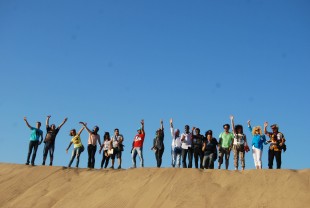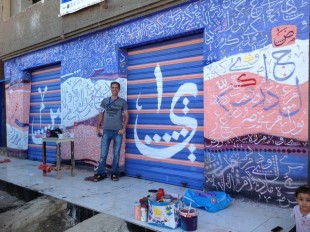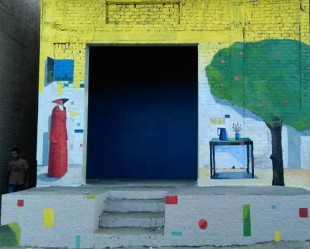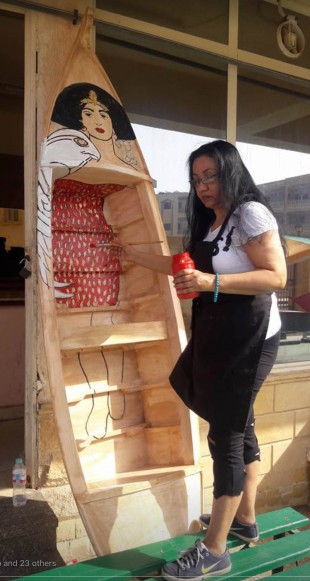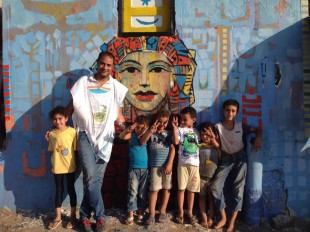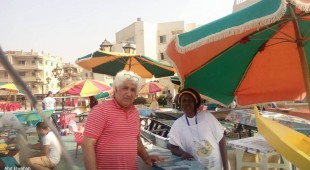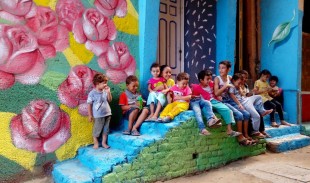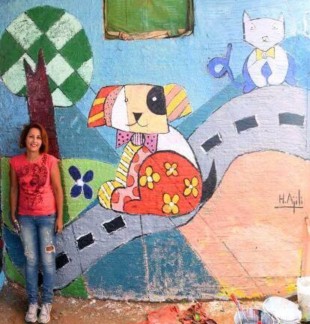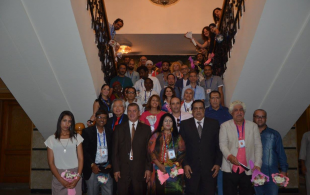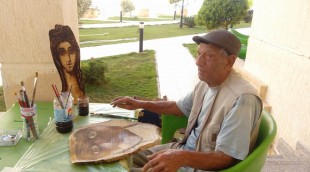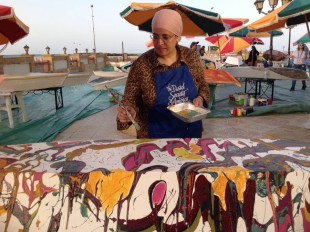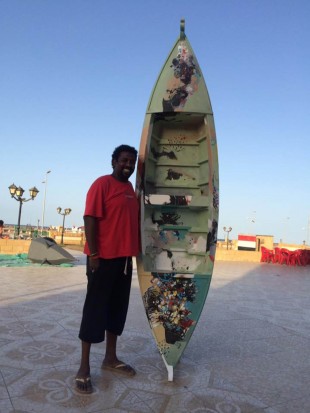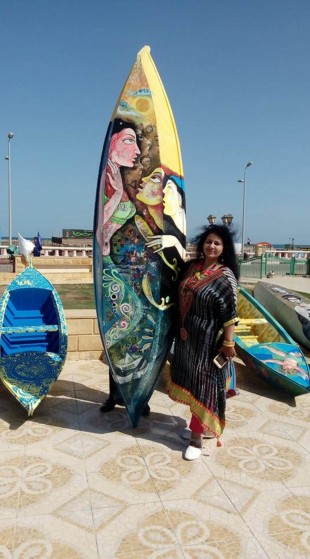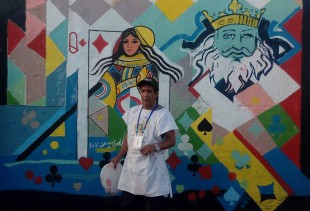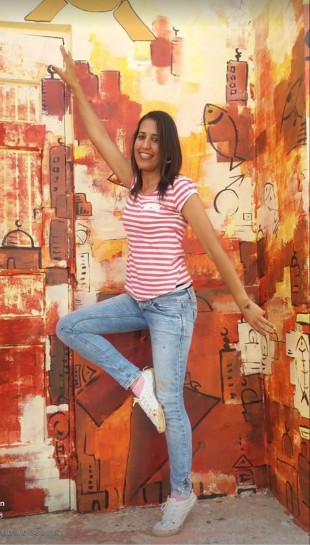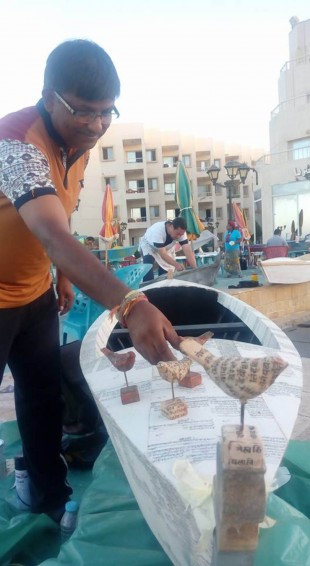El-Burullos Symposium for Painting Walls and Boats: The Asian Touch
Five hours long northward was the journey time from Cairo to El-Burullos city, on the banks of a huge lake with the same name, connected with the Mediterranean Sea. The lands were green farms, mixed with waves of palm trees under the magic blue – white carpet of the autumn season. I was eager to meet the artist Abdel-Wahhab Abdel-Mohsen; founder of a foundation carrying his name to promote culture, arts and development.
The first two days were programmed to show the forty guest artists the important and different cultural and natural spots of the area, as they came from 15 countries, and might visit the naïve place for the first time. One of the nice group photos was at the top of the sandy mountain of Al-Narjis.
Abdel-Wahhab Abdel-Mohsen; a great lover of Burullus Lake, in Kafr El-Sheikh governorate, has been keen to develop his birthplace with art. In the third round, October 2016, he could arrange to host 40 artists from Egypt and abroad, with two missions; to paint the wall of the small town inhabited basically by fishermen and farmers, and to merge their talented art to paint a small boat, that will be exhibited later in Cairo.
I was happy to meet artists from Asia, especially Korea and India, as they gave me the chance to talk about the importance of art in bridging between the peoples and cultures on the Silk Road.
Professor Dr. Clemens Beungkun Sou was a unique example of a Korean artist who has been living much of his life outside his own country. Graduated from Angewandte National University of Applied Art in Vienna, Austria (Mag.art), graduated from Architecture department of Jeonbuk National Univ. in Korea, (Dr.architect.) and has been lecturing for watercolor paintings and collage technique since 1993. He hold more than 60 solo art exhibition in all continents. His two works, both on a wall and a boat reflect the shining memories of his roots in the far east, as the hidden sun in the skies of northern Europe, as he lives in Austria for decades, couldn’t be found here, and it might be the sun of Egypt that reminded him with his motherland bright sun.
Vinay Sharma, India, could not stop using his mini iPad for cleverly photographing all details, especially moments of sunrise and sunset. But the real talent appeared in the geometrical wall art, and the messages sent from above his boat with birds fixed to the wooden deck covered with Hindi alphabet letters. More Indian atmosphere is coming with his citizen; artist Poonam Chandrika Tyagi, not only through the faces with cultural symbols, but the hot colors and bodies, together.
As it is impossible to cover all works in this short comment, it is a must to mention some Egyptian examples admired by natives and art critics alike. The Roses Alley, by Alaa Awad, the legendary epic scene of horsemen by horsemen from southern Egypt, the shop door with imaginative symbols by Sahar Al-Amir, the Old Man and Queen in Mustafa Eissa’ wall, the falcon guarding Egypt in Akila Riad’s boat, the faces of Egypt inspired by Coptic art in Al-Fayum, by Gamil Shfuq and Omar Al-Fayumi, two icons of modern art in Egypt.
For those and more artists from Sudan, Tunisia, Serbia, Saudi Arabia, Jordan, Senegal, Portugal, and Macedonia, there is a common light connecting all: they changed the lives of children, fishermen and villagers forever.
- Group photos was at the top of the sandy mountain of Al-Narjis.
- Arabic alphabet by artist Yassin Harraz
- 3 D effect by artist Jihan Suliman
- Akila Riyadh
- Ancient Egypt with modern Egyptians by Alaa Abu Hamad
- Artist Abdel Wahhab with artist from Senegal
- Children in the Roses Alley by artist Adel Mustafa
- Hoda al Ajili from Tunisia with her children world wall work
- Governor of Kafr El.Sheikh welcomes world artists
- Gamil Shafiq with his portraits
- Endless waves of love in Hala Shafei work
- Moataz El Imam. From Suan with love and smiles.
- Modern Cama Sotra in Ponam boat
- Mostafa Eissa plays cards on walls
- Tunisian artist poses next to her wall artwork
- Vinay Sharma and his messenger to India




















